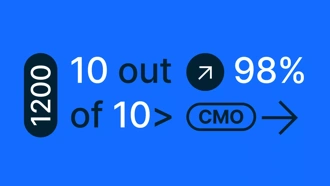Having a visual identity in 2016 means having a digital identity, and the teams that need to create that are converging now more than ever
Twenty years ago, the creative department was an eccentric group of writers and designers off in one corner of the building. They were rarely heard from, and every once in awhile a new batch of marketing or sales collateral would emerge, in print. If they were truly innovative, there was a website. Brand identity was limited to a few select channels, the CMO had control, and everyone was happy.
Fast forward twenty years, and creative teams are interconnected with other departments and engrained in the company technology now more than ever. But is that connection strong enough?
Marketers’ heads spin when they think about what’s in front of them: more requests are coming into marketing departments, while more channels emerge every year where brands are expected to have a presence. On top of that, more people within a company need to create content and have their hands on digital. Have you heard the term 'customer experience'?
The only way to reconcile all this is not to hire more marketers or technologists (though that’s a start), but to introduce a new technology ecosystem for all those necessary parties to use and thrive within. A fully connected technology chain ensures that creative and technology are aligned to a point where you can ensure brand consistency wherever the digital revolution may take you.
DMNews reports that 90% of customers expect consistent interactions across channels, while 64% of marketers cite lack of resources and investment as their top barrier to omnichannel marketing. Hiring for marketing must be through the roof across the industry. Certain data suggests, however, that it’s not: Indeed.com Job Trends reveals that marketing job postings are steadily on the decline since 2012.
What we do know is that purchasing of MarTech has been up year over year and projects to continue that way, and automation has been threatening to supplement or even replace certain marketing roles for several years now.
It’s no secret that marketing technology has allowed marketing departments to consolidate their teams and streamline operations. But technology and marketing operations are still fueled by people. Great creative comes from from great creatives, and great strategy comes from great strategists.





Who suffers from the basic creative challenge of too many requests and too little resources? Marketing teams do, as they constantly jockey for resources, budget, and attention within organizations. But in the end it’s the marketing teams’ product, the main character of their story, that suffers: the brand.
A ‘brand’ used to be a vague concept used to justify the high cost of creative or rationalize a project where ROI was unavailable. In the age of the consumer, it has evolved to become what Forrester calls a “critical financial asset”, used to “fuel sustainable growth”. The challenge isn’t even so much in building a brand identity in 2016, though that’s difficult enough. The challenge is communicating that brand identity on every digital front that consumers are on, which is just about everywhere. The only way to get there is with a collection of marketing technology systems that integrate seamlessly with each other and form a unified branding ecosystem that promotes speed and collaboration.
Technology is completely and unequivocally a vital part of creative and branding. The connectivity between these two entities should not only be one pillar of the strategy, but is the key concept to making the whole chain work.
Consider the lifecycle of a single image your brand owns. Where did it originate? Where will it end up? Looking into the management and distribution of a single image could tell a very compelling story of the role technology plays in your branding, what your team does well, and what you could do better to establish a more unified technology ecosystem.












